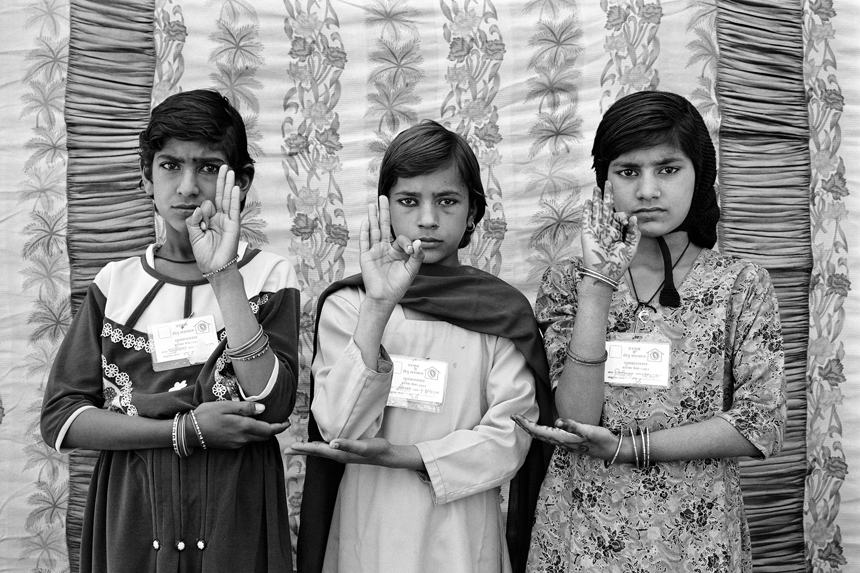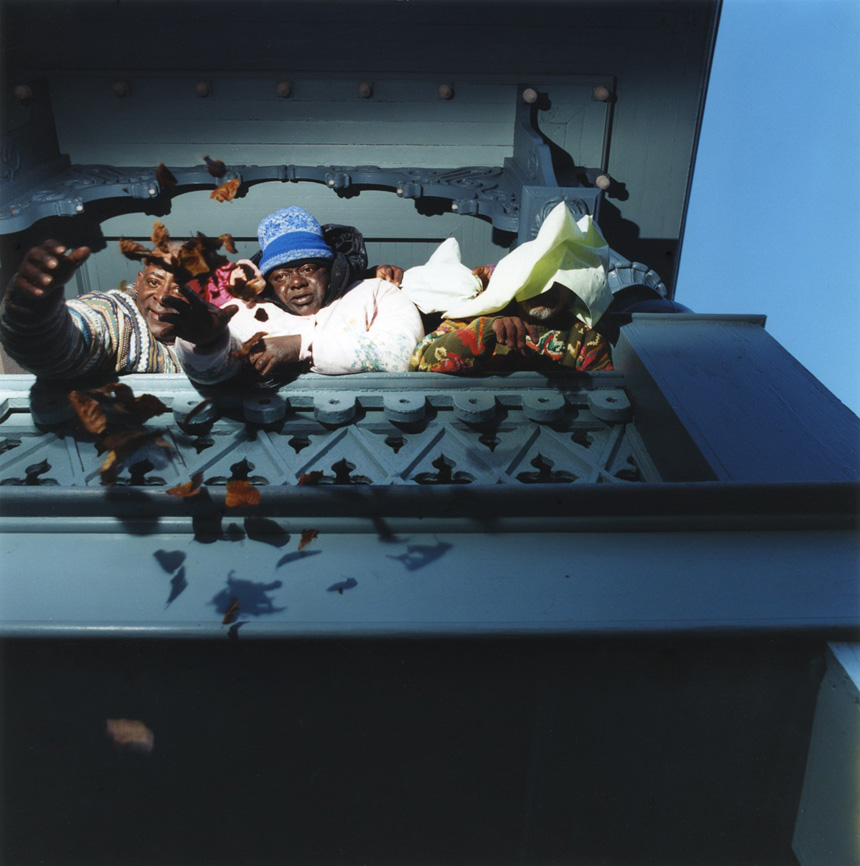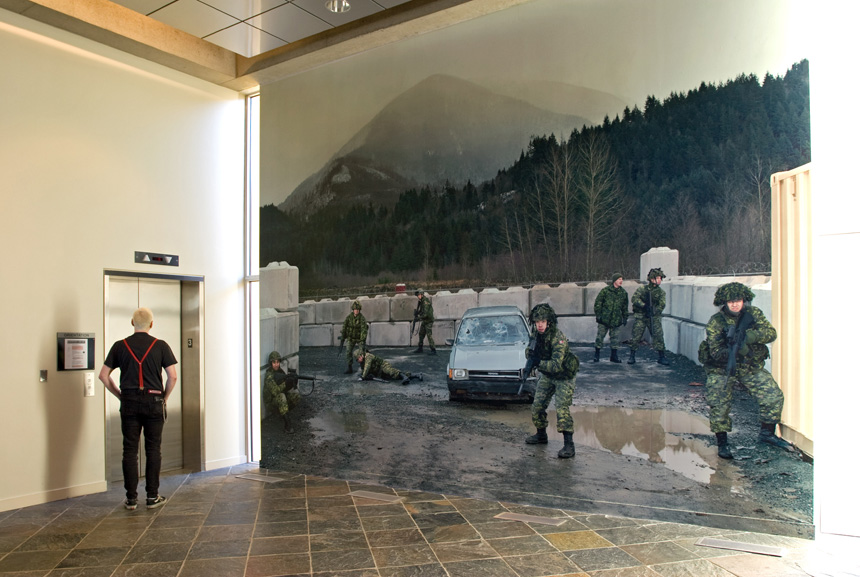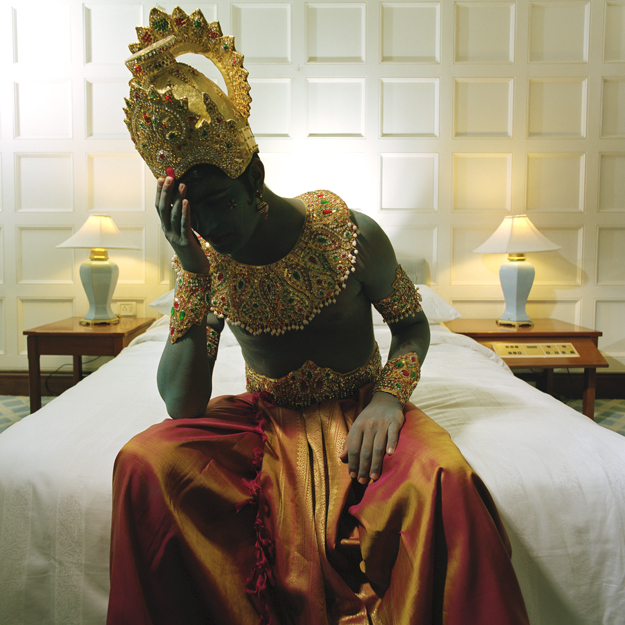Make Your Mark on Canada’s Biggest Photography Prize
The Grange Prize is Canada’s largest cash prize for photography and the only major Canadian art prize whose winner is chosen by a public vote. Each year, The Grange Prize Nominating Jury selects a shortlist of four extraordinary photographic artists – two from Canada and two from a partner country. Their work goes on view at the AGO and online at thegrangeprize.com, and then it’s up to you to decide which photographer should win the $50,000 prize. The 2011 shortlist was announced August 30, the same day that public voting begins.
The Grange Prize recognizes that contemporary photography includes a broad range of diverse practices and places no limitations on approach, subject matter, technology, or presentation. Artists are selected for excellence in the medium.
Here is the 2011 shortlist and the Jury’s Statement about their work:
Gauri Gill
Gauri Gill has recently emerged as one of India’s most significant young photographers. Gill’s practice is complex because it contains several seemingly discrete lines of pursuit. These include her more than a decade long study of marginalized communities in Rajasthan, of women from different generations and their often tentative encounter with modernity. She has also investigated and recorded issues around migrancy, and the decrepitude and change generated by an expanding city. Working in both black and white as well as colour, she seeks out the narratives of ordinary heroism within challenging environments. Gill’s work also addresses the twinned Indian identity markers of class and community as determinants of mobility and social behaviour. In these works there is irony, a rugged documentary spirit and a human concern over issues of survival.
Elaine Stocki
Elaine Stocki’s photographs began drawing critical attention when she was still an undergraduate student at the University of Manitoba. Now based in Brooklyn, she continues to hone a practice that challenges the expected limits of documentary photography by infusing its conventions with a constructed theatricality expressed in a voice uniquely her own. Working with subjects from a range of social standings – some of whom are strangers she meets by placing classified ads – Stocki creates compositions that explore the pressing issues of race, class and gender. While her themes are age-old, her language is remarkable in its seamless merging of reality and fantasy, order and disorder, humour and tragedy. Stocki roots herself in the history of photography, but has devised an approach to the medium which allows her to create images that are consistently unexpected and unconventional and always provocative.
Althea Thauberger
While Althea Thauberger’s practice defies strict definition by artistic medium, she has produced remarkable photographs, films and videos, among other things, over the course of her decade-long career. Driven by her interest in, and unique facility for, collaboration, the thread that connects all of her projects is her thoughtful engagement with groups of people – most often well-defined social enclaves – as her subjects. She works with these communities to develop performances that offer the members opportunities for self-exploration and self-definition. The works, which Thauberger produces to record the collaborations, are always extraordinarily striking documents that entice, engage and surprise her viewers.
Nandini Valli
One of the less historicized, recently celebrated strains in Indian photography is the performative photograph. Nandini Valli Muthiah has rapidly emerged as one of its foremost exponents. Nandini draws upon a long, established tradition in Indian popular art, the hyperrealist painted calendar poster of the gods. It is a widely recognized style, one that incorporates traditional painting and the painted photograph within a “mythologized” space. The element of subversion lies in the way in which the heroic figure is represented within normal or “modern” environments. A blue-bodied god in a hotel room, or young girls masquerading as Indira Gandhi at a fancy dress show, are comments on India’s perception of the heroic as much as on middle-class aspirations. Nandini Valli Muthiah approaches photography much like a cinema auteur, constructing every aspect of her frame. Her work shows a mature and ironic understanding of a shifting aesthetic field and value system in an increasingly globalizing India.
How to get involved:
Step One
Join us on the The Grange Prize Facebook page. We’ll give you access to ‘behind-the-scenes’ updates, exclusive contests and great content about this year’s nominees.
Step Two
Celebrate the arrival of The Grange Prize 2011 at an amazing free launch party at the AGO on Wednesday September 7. The celebration will feature drinks, snacks and a set by DJ Jaime Sin in the AGO’s Walker Court, along with video interviews and live advocates highlighting each of the four shortlisted artists. You’ll also get a chance to meet the artists in person and view their work inside The Grange Prize 2011 Exhibition. Don’t forget to save the date.
Step Three
Cast your vote! Voting opens on August 30 and you can vote in person at the AGO or by visiting thegrangeprize.com. You have until October 29 to make your choice, and the artist who receives the most votes will receive the $50,000 prize at a gala reception at the AGO on November 1. Send me a reminder when voting opens
The Grange Prize is a unique partnership between the Art Gallery of Ontario and Aeroplan, The Grange Prize aims to engage the public in a vital discourse about the power and prevalence of photography in our world today through public exhibitions, voting and online dialogue.




